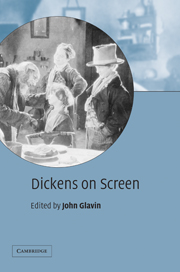Introduction
Published online by Cambridge University Press: 22 September 2009
Summary
A great deal that follows in this book is likely to seem not just strange but very strange to a reader who thinks that adaptation is supposed to copy an original reliably, transferring it to a new medium intact, and with respect. In this, the standard view, a good adaptation is good precisely because it gets a better source right. And here, just to be even-handed, is a strong argument for just that view, put with her usual eloquence and force by the novelist Fay Weldon, replying to my request for a preface.
Dear John,
Thank you for asking me to write your preface – I am flattered – but my problem is though good on Austen I am bad on Dickens. (I don't know why this antithesis occurs so naturally – she was born in 1775 and he in 1812, separated by nearly four decades: but I suppose in our heads Dickens and Austen both are just vaguely way back around then.) They made me read Mr. Pickwick at school, and I simply could not laugh. The book was illustrated – line drawings of corpulent men with pot bellies in tight waistcoats, which seemed not just outlandish but revolting. (This was in New Zealand: the old men I knew were skinny, gnarled pioneers.) I do admire that energy, that rolling prose, that Rushdie-ish freedom with language, at least when it's read aloud, but I simply cannot bear to read it myself. […]
- Type
- Chapter
- Information
- Dickens on Screen , pp. 1 - 8Publisher: Cambridge University PressPrint publication year: 2003
- 2
- Cited by

